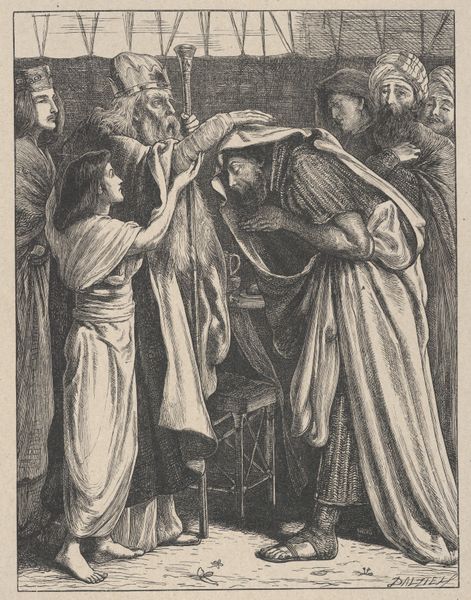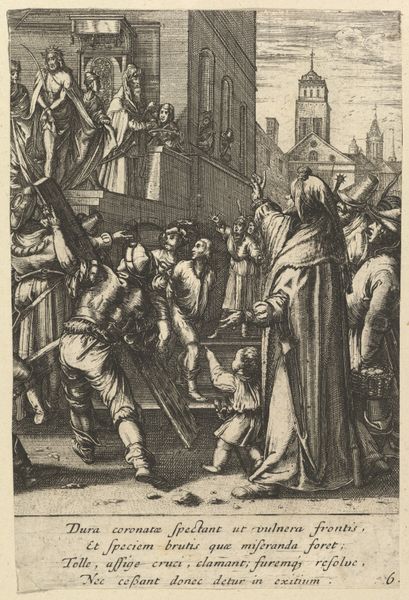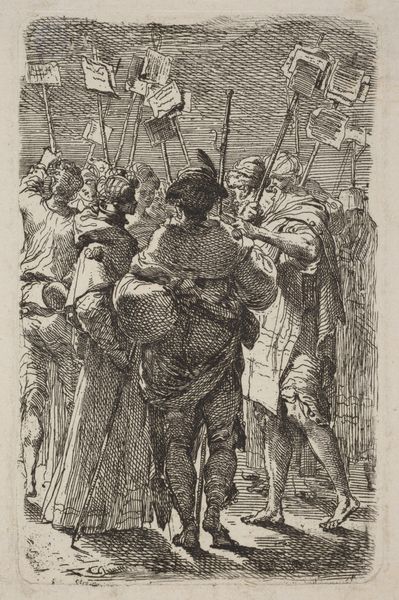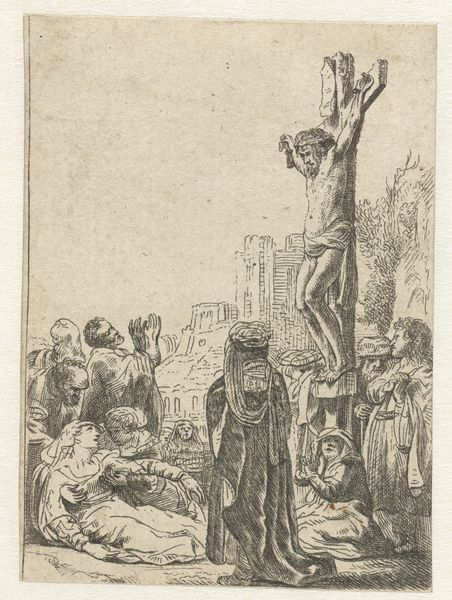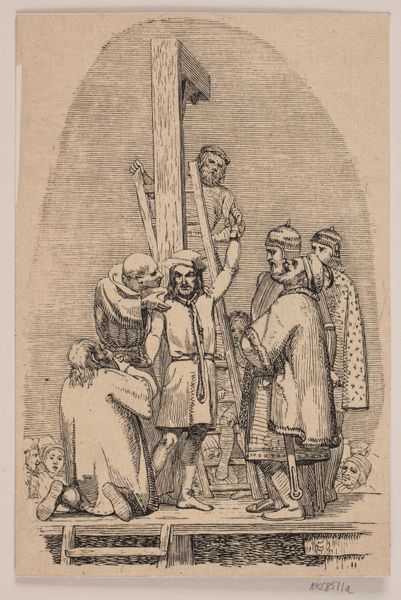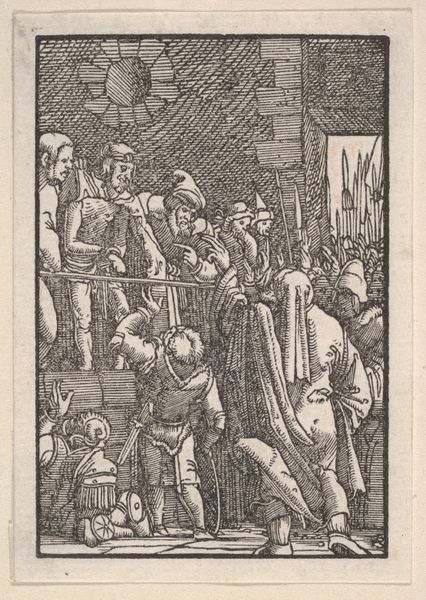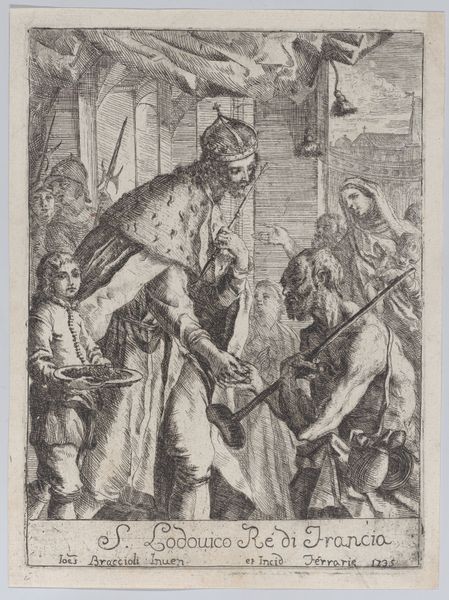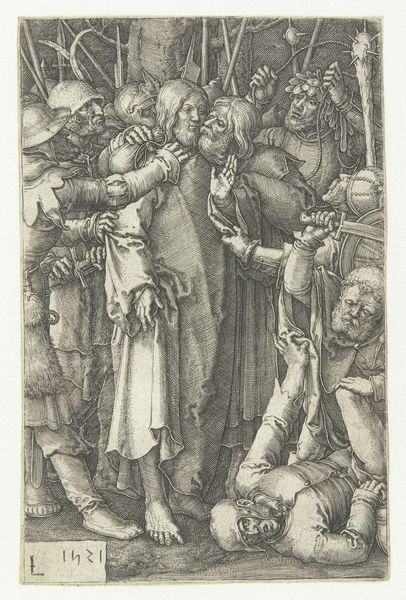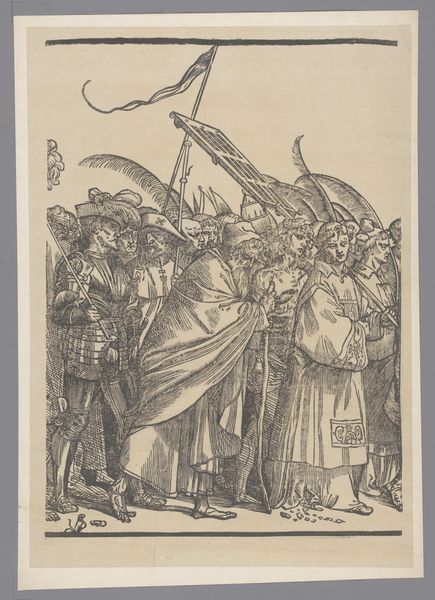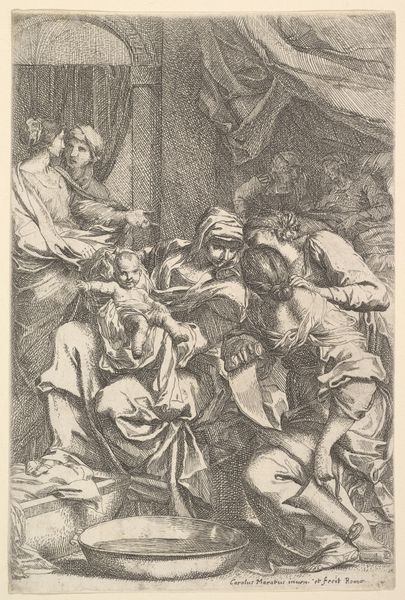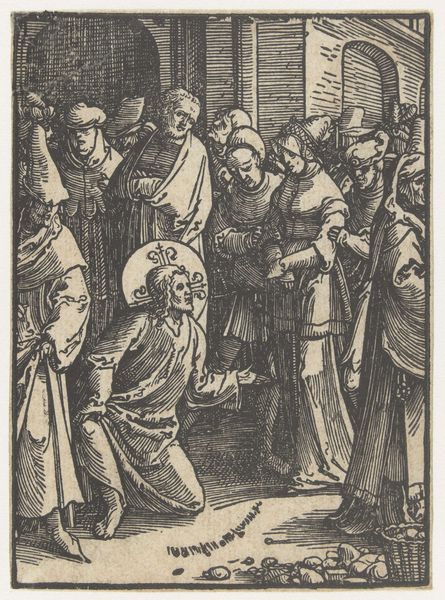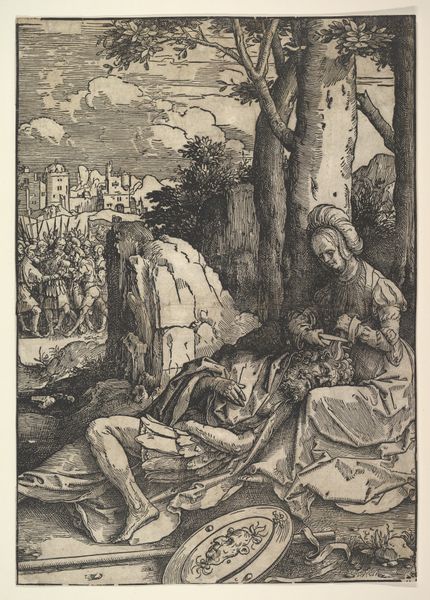
The Unmerciful Servant (The Parables of Our Lord and Saviour Jesus Christ) 1864
0:00
0:00
Dimensions: image: 5 1/2 x 4 5/16 in. (13.9 x 10.9 cm) sheet: 7 5/16 x 6 1/16 in. (18.6 x 15.4 cm)
Copyright: Public Domain
Editor: This is "The Unmerciful Servant" by Sir John Everett Millais, from 1864, rendered as an engraving. It’s quite a stark scene. I find the looming figures intimidating, and the vulnerability of the kneeling man really comes through. What stands out to you when you look at it? Curator: It’s a powerful visualization of a complex social dynamic, isn’t it? Millais’ piece really highlights the public nature of justice in the 19th century, especially its connection to religious parables. Consider the setting - a gathering before what appears to be a cathedral. It places the judgement not just in a legal, but a moral and overtly religious space. The story being illustrated - a servant forgiven a massive debt then mercilessly demanding repayment from another - would have been extremely resonant at a time of social and economic anxieties. Editor: So, you are saying the artist’s choice to set the story in public adds another layer to our understanding of the piece. Curator: Precisely. Think about how art served to disseminate moral lessons. How does Millais use the conventions of history painting, a genre designed to teach viewers about the past, to reflect contemporary social concerns? It asks: what responsibility do powerful institutions and figures have to their people? Editor: I see that link more clearly now. It isn’t just about personal forgiveness but speaks to the societal structures that either promote mercy or allow for injustice. I hadn't considered the socio-political element of what looked simply like a Biblical scene. Curator: It is the painting's connection to religious morals through which he explores and critiques the relationship of the social classes. I wonder if Millais chose engraving so the images could circulate further as prints in books and periodicals and get these messages to a wider audience? Editor: Fascinating. Thinking about its availability as a print reframes it from a singular artwork to something more akin to social commentary, reproduced and distributed widely. It offers so much to consider!
Comments
No comments
Be the first to comment and join the conversation on the ultimate creative platform.
